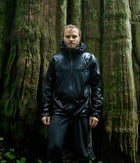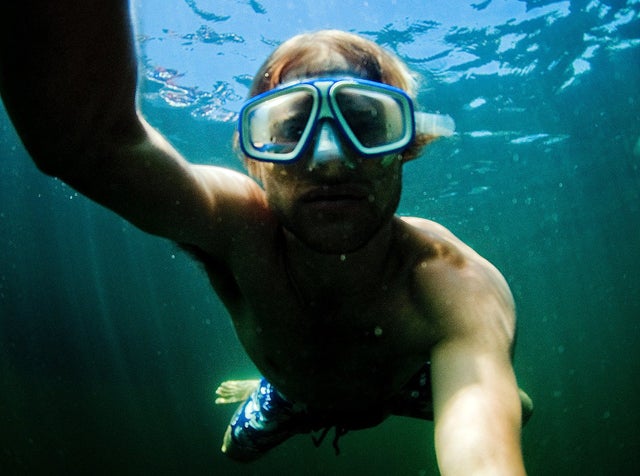With over 45 magazine covers, several photography awards, and a series of ski films to his name, Jordan Manley, 28, is something of a ski-industry phenom. The British Columbia-based videographer-photographer is the creative force behind A Skier’s Journey, his annual three-part series of short ski films, which dropped the second episode of its third season, “Dubai: A Skier’s Journey,” earlier this week. The 10- to 15-minute webisodes are mediations on various ski destinations, from the funky mountain co-op of Shames, B.C., to couloir Mecca Baffin Island, and aim to show viewers these places from the inside out. Launched in 2010, Manley’s series marked a shift in ski movies toward shorter, more episodic films with richer cinematography and storytelling that bring places, rather than athletes, to life. For many, Manley’s films are a highlight of the ski porn season and a welcome respite from the two-hour-long, powder-smashing, cliff-stomping bro shows.
The Snow Report
The latest snow, ski, and winter sports stories from ���ϳԹ���. Jordan Manley.
Jordan Manley.In addition to A Skier’s Journey, Manley’s work has appeared on the covers of Skiing, Powder, and The Ski Journal. He’s won Whistler Blackcomb’s Deep Winter contest three times and has shot commercials for Arc’teryx, Oakley, and Helly Hansen. All of this is impressive for any cameraman—but even more so given Manley’s age and the fact that he received no formal training as a photographer. He started casually shooting his friends mountain biking and skiing in high school. At 21, he published his first images in Skier Magazine.
Since then, he’s shot in Bulgaria, Japan, France, Iceland, and many places in between. Watching Manley’s films, it’s hard not to feel connected to something bigger than just skiing. Sure, there’s blower pow shots and amazing skiing by Forest Coots and Chad Sayers. But through Manley’s masterful camera work and storytelling, he captures the art of moving, living, and being in the mountains in a way that transcends pure sport and touches on something greater. In offering viewers a deeper understanding of skiing’s places and people, he gives us skiers, if you take him up on the opportunity, an opportunity to express why we do what we do—and why we love it.
Here, Manley discusses Dubai’s ski community, what draws him to mountain people, and being naked—a lot—in Japan.
Do you think ski films are changing? If so, how? It seems like there’s a trend toward shorter, more episodic type films and films with an actual storyline as opposed to pure porn.
I think so. In general, technology has changed the production and distribution of film and video. It isn’t only open to the people that had big budgets and were entrenched in the market and in their ways. This change has given people new ways to tell different stories. It’s refreshing.
You say you aim “To tell stories about people who live and work in the mountains?” Why do you want to tell this story?
Outdoor spaces are where a lot of my favorite experiences in life occur—in the mountains, in the forest, or on the ocean. As a photographer, I’m interested in experiencing landscapes but also the people who make them home. I think the sense of commitment and immersion that you find in mountain communities is an interesting world to explore.
How did you come up with your series, A Skier’s Journey?
Four years ago I thought about doing a series that would try to dig a little deeper into the experience of traveling for skiing, compared to what I had come to know from a lot of ski porn out there. I had very little idea of how the series would evolve though.
How do you pick the destinations to feature in A Skier’s Journey?
To some extent, we’ve honed in on places that exhibit contrast, and in some cases, extreme landscapes. The landscape we encountered on Baffin Island was an extreme contrast between horizontal—frozen ocean—and vertical planes, vertical rock walls, and some of the the highest cliffs on the planet. There are very few places like it on earth. Dubai’s desert and urban landscapes are also extreme—where the tallest building in the world rises out of the largest sand desert on the planet; where a ski hill operates in 104-degree heat; and, strangely, where we found a quirky, endemic ski community growing.
Not all of the episodes are about extreme contrasts, or superlative places, though I think we’ve always tried to find stories about places that are unique in some way. At times, we’re probing the margins of skiing.
Can you talk a little more about the “quirky, endemic ski community” in Dubai?
It turns out that there is an interesting mix of people that come to . There are the people who are just shopping in the mall and want to try skiing (Ski Dubai is part of Dubai’s second largest mall, Mall of the Emirates), and ex-pats who are working in Dubai, and this is an easy way to continue their ski habit. Interestingly, there is a crop of people who learned to ski in Dubai. A lot of these people are either from Dubai or have come from all over Asia to work. This is not the white, wealthy ski demographic (which makes up the industry’s foremost image). For this latter group, their entire ski experience is an indoor one.
What surprised you most about shooting in Dubai?
The biggest surprise was a guy we met named Mohammed. He moved to Dubai so he could ski almost every day of the year. He grew up in Morocco, where his dad was a ski guide, before moving to Europe to race FIS. He found out about Ski Dubai after it was built and decided he wanted to work and train there. He teaches skiing and coaches some of the ex-pats in the Dubai Ski club. We are wagering that he skis more than anyone else on the planet, six days a week, all year long. Where else is that possible?
Can you talk a bit more about the experience of shooting in Dubai?
Filming/being/skiing indoors was surreal. It felt like being in a turbocharged hockey arena. You’re happy because it’s cooler than the 100 degrees outside, but the air is not fresh like it is skiing in the mountains. Moving between such extreme temperature and moisture gradients was bizarre.
Can you talk about shooting episode 1, season 3 on Hokkaido, Japan?
It had the best snow out of any place we’ve ever shot. That was obviously really enjoyable. The highlight for me was not only the snow but the hot spring experience (onsen in Japanese). We would sample a different hot spring almost every day we were there. Each has it’s own chemical composition, group of people, and design. That part made me want to really stay. We were naked all the time.
Can you talk about the experience of skiing in Japan? Does it live up to its hype?
The pace is different. You don’t rush for the powder maybe the same way you might in other places. The pace was so slow and there was tons of snow—those two things are something a North American maybe doesn’t always experience in such big doses. With the help of Andrew at Black Diamond tours, a lot of the time we would drive the highway and pull off somewhere and ski tour from there.
It isn’t a wilderness experience. These valleys have been inhabited and cultivated forever, but it is quiet. The runs aren’t long, or too steep, but the snow is often amazing and the terrain is playful and the forests are beautiful spaces to move through. Apres is either a beer from the vending machine or sake at the bar. And, of course, an onsen before or after dinner. It isn’t where you go to party necessarily, but I think Japan is my favorite apres spot.
You have a very distinct tone that resonates throughout all of your films. How would you define it?
I think the tone relates to my desire to paint a portrait of the landscape, firstly. In achieving that, I try to leave enough space for the viewer to get a sense of the world they are entering.
What is your favorite episode of A Skier’s Journey and why?
Baffin Island is my favorite. I’m never fully happy with anything I have put out, but Baffin Island was the closest I’ve gotten to representing a place how I wanted to. I only wanted to give some sort of justice to the most amazing landscape I’ve ever had a chance to visit.
How do you come up with the funding for the films?
Arc’teryx and Gore-tex have supported A Skier’s Journey���ٳ���dzܲ���dzܳ�.
What other projects do you have on tap for this winter?
I will be working on three or four more A Skier’s Journey episodes, as well as some editorial and commercial shoots. I am also going to be shooting the last components of a coffee table book project that I am working on called Movement in Landscape: A Visual Journey From Vancouver to Whistler. This, in contrast to all the travel photography I do, is an ode to the place I’m proud to call home.
I’m also planning on making a full-length ski film starting next year—not saying what it is at the moment exactly, but it won’t be ski porn.
Who are your favorite ski athletes to work with and why?
My favorite athletes to work with are people that are really engaged in the process of searching out and exploring. They aren’t simply the subject but are a part of creating and sharing in a vision. Chad Sayers has been a great friend and collaborator for a long time now. Dave Treadway is also a good pal and collaborator. Forrest Coots joined us last year and will be hopping on the ASJ train again—he’s a hoot!
Where is your favorite ski destination and why?
Every location has its gifts and challenges. I think Baffin Island really stands out for me. There is no other place on the planet that shares its unique topography.
How are your ski films different than other ski films?
When we first conceived of A Skier’s Journey, most of the mainstream ski porn videos took viewers to a lot of amazing places and showed some amazing skiing. But they tended to gloss over what made those experiences unique with respect to landscape and culture. For A Skier’s Journey, the referent object of the films/episodes has become the place itself, not the athlete/s. The athletes are instead vehicles to lead the viewer to and through a destination, rather than being the main focus of the piece.
How do you select the music for your films and what role does it play?
I literally spend weeks listening to music online. Music is so important to construct ideas and communicate the desired tone. I start with an idea of what I’m looking for and then flip through various sites online until I’ve found the right tracks.
What’s your creative process with A Skier’s Journey? Do you have a story in mind that you want to shoot or do you let the story reveal itself?
It depends. I like to try to have a strong idea going in, but ultimately you see and experience things along the way that change how you feel about the story, and I try to be open to those things. In some cases, the story doesn’t present itself to me until after, and I construct a narrative in the editing room.
Where do you want to shoot in the future for the ASJ?
Last year we went to Kosovo and met a really interesting group of skiers there. We hope to go back and capture them and their home. They have some really wonderful skiing. We’re also planning on heading to Siberia, and maybe China.


